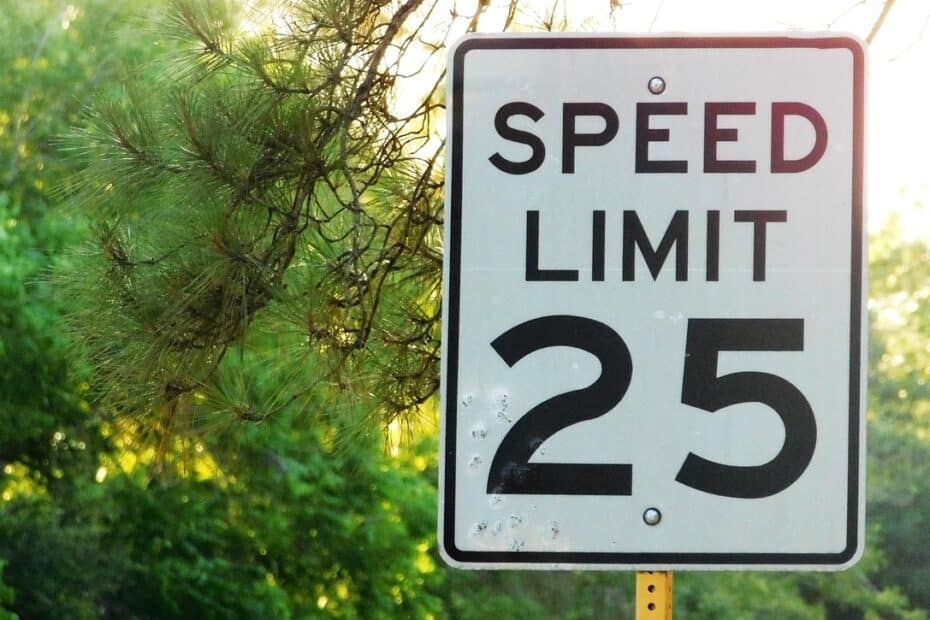In Europe, ebikes cannot provide electric assistance beyond 25 km/h, unless you want to pay registration, plates and insurance to be assisted up to 45 km/h, purchasing an S-pedelec. In the US, that limit is higher, 32 km/h or 20 mph.
American riders must cover longer distances than Europeans
According to the United States Department of Transportation Federal Highway Administration, an average American driver clocks 13,476 miles per year, or 21687 km. For the EU, that average reaches barely 10,300 km/year. It’s arguably the same for ebike riders. Just look at Los Angeles skyline compared to that of Paris. Be it visiting friends, daily riding to work or shopping, more densely populated cities, with taller dwellings, demand shorter trips than broadly extended cities with low buildings.
- Dwellings in Paris
- Broad and flat Los Angeles
The advantages of an electric assistance limited to 25 km/h
- Our European electric bikes are also a fitness tool
- The lower the speed, the better and more needed the torque
- Sparing our battery and motor
- Sparing our brakes and shock absorbers
- Slower is safer
- Enjoying the natural gliding sensation
- Longer range
Our European electric bikes are also a fitness tool
Let’s not delude ourselves. An electric assistance up to 32 km/h can spoil us. We would rely too much on the motor, sparing our muscles beyond what is reasonable, trespassing the borders separating sporty riding from mellow cruising. Especially if we are to use the strongest assistance level, a mighty 60 to 85 Newton meters of torque would allows us to caress the pedals, hampering the fitness benefits of riding. We would enjoy little body exercise, and even less training and fat burning. We want our electric motor to be our loyal commuting, as well as fitness, companion, not the device which feeds our laziness.
The lower the speed, the better and more needed the torque
Torque is most effective at the start and at lower speeds, exactly when it’s most necessary, because accelerating from 0 to 25 km/h demands a harder effort than accelerating from 25 km/h to 32 km/h, inertial effect easing the muscular effort in the latter speed range. Therefore, even if we are weak, lazy or tired, the faster we ride, the less we will benefit from the help of our e-bike motor. 0 to 25 km/h is a golden spot optimally harmonizing our leg power with electric assistance.
Sparing our battery and motor
Batteries are somehow the weakest point of any electric drive system, be it a car or an ebike. They tend to overheat and deplete their energy rather quickly, especially when long-lasting efforts are demanded. Now, suspending electric energy consumption every time we exceed 25 km/h speeds, is an excellent way of preventing or diminishing battery and motor overheating, all the more because at higher speeds, faster airflow effectively cools down both idling battery and motor. Just touch them after a prolonged effort to verify it. Moreover, motors contain plastic or rubber gears which are damaged or worn off by high temperatures. Riding in the summer heat can be quite harmful for our motors and batteries, making electric assistance interruptions beyond 25 km/h an effective prevention means.
Sparing our brakes and shock absorbers
Stumbling on a pothole at more than 30 km/h can damage not only rims and spokes, but also other parts that have to bear a considerably violent shock. Roads are not always smooth, and the higher the speed, the faster they wear our ebike.
Slower is safer
Streets in Europe are crowded, often too narrow to allow either bike paths or lanes, or enough clearance for ebikes to safely ride along cars. Avoiding pedestrians and keeping away from cars intersecting or over taking us is safer at lower speeds. Moreover, should ebike assistance be allowed up to 32 km/h, many municipalities would ban ebikes from parks and crowded bike paths.
Enjoying the natural gliding sensation
Riding a bike can be somehow cumbersome, especially for older or weaker individuals, when starting, accelerating or climbing. Nevertheless, once you’ve reached a speed of about 25 km/h, inertia lets you enjoy a pleasant gliding sensation, because pedaling becomes almost effortless. At that speed, a brisk breeze caresses your face, silence enhances the beauty of the landscape, euphoria lift your spirit. You are even grateful that your motor switches off, enabling ou to practice some real cycling, the one which turns physical effort into mental pleasure and satisfaction.
Longer range
Whenever the motor assistance keeps going beyond 30 km/h, we continuously tap energy from the battery, what depletes its charge quite sooner than giving the battery longer pauses when riding faster than 25 km/h. Indeed, batteries have a tendency to overheat and greatly benefit from idle periods.
25 km/h limited assistance disadvantages
Time is money, isn’t it?
If you needed to commute on distances exceeding 7km, with no stops, you may yearn for a more extended assistance, which would enable you to spare time.
Ebikes heavy weight is burdensome without assistance
Although the latest models of light city and trekking ebikes weigh around 18 kg, heavy ebikes slow you down considerably when motor assistance switches off. That’s all the more unpleasant for ebikes that inflict you a more or less detrimental motor resistance once you exceed 25 km/h.
Conclusion: whatever!
In a famous Lafontaine’s tale, a fox can’t reach a tasty ripe grape, because it hangs too high. It then mutters: “anyway it was unripe”! Seemingly, if you feel that a 25 km/h assistance speed limit is too strict, we hope we gave you grounds to ease your dismay. Should you be satisfied with such limit, we hope we strengthened your convictions.



Speed limit should be 30kph. Same as urban speed limit, period. So much unsafe overtaking on narrow streets could be avoided.
Hello,
Thanks, I personally agree.
Cheers,
Luca
Hello. Is it possible to ride ebike with throttle on but maintain the speed limit 25km in Germany?
Hello,
This would be possible, of course. However, due to German regulations this would not count as a pedelec and therefore you would not be allowwed to use cyclepaths and bike lanes with such an ebike.
Cheers, Matthias